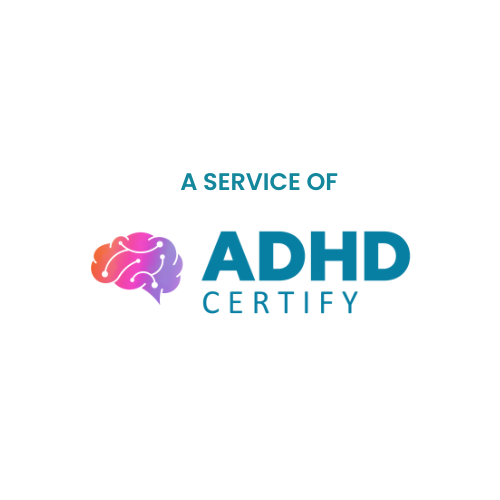Sensory overload at school happens when the environment overwhelms a child’s nervous system. For autistic and other neurodivergent students, this can mean struggling to focus or stay regulated during the school day. Crowded corridors, loud classrooms, bright lighting, and sudden transitions can all stack up, pushing them into shutdown or meltdown before lunch.
Parents and teachers often wonder, is this just part of school life, or is there a way to help? The answer is yes, small changes in classroom setup and routine can significantly reduce distress and improve learning.
According to NHS Digital 2022, children aged 11 to 16 with a probable mental disorder were significantly less likely to feel safe at school (61.2%) compared to peers without one (89.2%).
Understanding how sensory overload at school affects individuals helps us create calmer, more inclusive classrooms.
Quick Summary: Sensory Overload in Schools and How to Help
Supporting autistic and neurodivergent students starts with recognising what drives sensory overload at school and putting practical supports in place. This blog highlights the most common triggers and provides sensory-friendly classroom strategies that make learning safer and calmer.
- Common Classroom Triggers:
- Noise
- Bright lighting
- Crowded hallways
- Sudden changes in routine.
- Practical Strategies for Reducing Sensory Overload: classroom adjustments, sensory breaks, structured transitions, and use of sensory aids.
- Partnering with Parents and Students: creating individual sensory profiles and encouraging self-advocacy.
- School-Wide Culture and Training: SEND staff awareness, inclusive environments, and whole-school policies.
- When Extra Support Is Needed: professional input from OTs, psychologists, or autism assessments.
Together, these approaches show how small, layered supports can reduce overload and help students thrive.
Let’s begin by exploring why sensory overload happens in schools and pinpoint the common triggers that get in the way of learning and wellbeing.
Why Sensory Overload Happens in Schools
Understanding triggers is the first step to supporting students effectively.
Common Classroom Triggers
Schools are full of sensory input, and certain situations are especially challenging.
Common triggers include:
- Noise in busy classrooms that makes it hard to concentrate.
- Bright lighting such as fluorescent bulbs that feel harsh or distracting.
- Crowded hallways where movement, chatter and physical contact build overwhelm.
- Sudden schedule changes, like a different teacher or a last-minute room swap.
These may seem minor to adults, but for a neurodivergent student they can completely derail the school day.
The Impact on Learning and Wellbeing
When sensory overload at school takes hold, it can be hard for students to focus on lessons. Some may experience shutdowns, while others might reach a point of meltdown.
These are not signs of misbehaviour, but genuine responses to overwhelm.
Sensory difficulties often lead to emotional fatigue and heightened anxiety, which in turn can affect attendance and participation. Recognising this impact helps teachers and parents see that behaviour is communication, and that calm, predictable environments support better learning.
Practical Strategies for Reducing Sensory Overload
No single fix works for every student, but layered supports can create calmer school days.
- Sensory-Friendly Classroom Adjustments
- Dimmer lighting or the use of natural light where possible.
- Visual dividers to reduce distractions and give personal space.
- Quiet zones for students who need a break from noise and movement.
- Flexible seating options such as beanbags, wobble stools or standing desks.
- Build in Sensory Breaks
- Short movement breaks between tasks to help students reset.
- Quiet corners where a child can step back without leaving the room.
- Fidget tools or weighted items to provide grounding input and reduce stress.
Some children use subtle stimming as a way to cope with overwhelm.
Understanding hidden stims in autism can help teachers and parents recognise these self-regulation strategies and support them without judgement.
- Support with Transitions
- Visual schedules that outline the day clearly and reduce uncertainty.
- Countdowns before transitions (e.g. “five minutes until tidy up”) to give warning.
- Staff preparation before assemblies or fire drills to avoid sudden overwhelm.
- Use of Sensory Aids
- Noise-cancelling headphones to soften overwhelming sounds.
- Chewable jewellery or tinted lenses for discreet sensory regulation.
- Ensure aids are normalised, not stigmatised, so students feel comfortable using them.
Partnering with Parents and Students
The best strategies come from listening to lived experience.
Individual Sensory Profiles
Every student has a different sensory profile, which means what overwhelms one child may not affect another. Working with parents to identify specific triggers, such as certain sounds, textures, or lighting, allows schools to tailor support.
These details should be reflected in Individual Education Plans (IEPs) or SEND documentation so that staff can respond consistently. The SEND Code of Practice (2015) emphasises collaboration with families and the importance of personalised planning in meeting sensory needs.
Encouraging Student Self-Advocacy
Supporting children to recognise and communicate their needs helps prevent sensory overload at school from escalating. This might involve teaching younger pupils to use visual cards or symbols, while older students can be encouraged to request breaks directly. Normalising these strategies avoids stigma and reinforces that self-advocacy is part of inclusive practice. Schools that validate student voices help build confidence and reduce anxiety.
Parents also play a key role in setting routines at home. Our guide on back-to-school tips for autistic parents offers simple ways to make mornings, homework, and transitions less stressful.
School-Wide Culture and Training
Sensory supports should not be “extra”, they should be embedded into inclusive practice.
Teacher and Staff Awareness
Raising awareness of sensory processing through SEND training ensures staff recognise when behaviours stem from overload rather than misbehaviour. Training also equips teachers with practical strategies such as offering movement breaks or adjusting lighting.
Normalising these approaches benefits all students, not only those with identified needs.
Creating Inclusive Environments
Whole-school changes can reduce the likelihood of overload. Examples include creating quiet spaces in lunch halls or playgrounds and using staggered transitions to avoid crowded corridors. Policies that embed sensory regulation into daily routines promote a calmer environment and support learning across the school community.
Conclusion
Sensory overload at school is not misbehaviour. It’s a sign that a child’s environment is overwhelming, and with the right support, things can change. Small, consistent adjustments, from lighting to seating to clear routines can transform the classroom experience for autistic students.
The most effective solutions come from teamwork. Parents, teachers, and students themselves each hold part of the puzzle, and open communication makes it easier to spot triggers and build strategies that work. When schools listen and adapt, children feel safer, calmer, and more ready to learn.
If you’re unsure whether your child’s difficulties in school may be linked to autism, an Initial Screening Consultation or a Children’s Autism Assessment can provide clarity and guidance. With understanding and the right supports, every child can have the chance to thrive.
Frequently Asked Questions
What is the difference between sensory overload and a meltdown?
Sensory overload at school happens when the brain is overwhelmed by input such as noise, light, or movement. A meltdown is one possible response, it’s not a choice, but an intense reaction to overload. Some children may instead withdraw or shut down. If you’re unsure whether your child’s experiences may relate to autism, our Initial Screening Consultation can help guide the next steps.
Can sensory overload affect exam performance?
Yes. Overwhelm from bright halls, crowded rooms, or constant noise can make it difficult for students to focus and recall information. Adjustments like quiet rooms, noise-reducing headphones, or extra time can help level the playing field.
How can schools support teenagers who feel embarrassed about using sensory aids?
Normalisation is key. Teachers can present sensory-friendly classroom strategies as tools that benefit everyone, not just autistic students. Peer awareness and staff modelling reduce stigma, helping teenagers feel confident using the aids they need.
What role do occupational therapists play in managing sensory needs in schools?
Occupational therapists (OTs) assess a child’s sensory profile and recommend tailored strategies. This may include structured sensory breaks, classroom adaptations, or specific tools. OTs often collaborate with schools and families to ensure consistent support across settings.
Can reducing sensory overload improve attendance and reduce school avoidance?
Absolutely. When schools build in classroom sensory supports, children feel safer and less anxious, which makes attending school more manageable. For families where challenges persist, a Children’s Autism Assessment can provide a clearer understanding of needs and help secure appropriate support.

Sophia Evans
Author
Sophia Evans is a freelance writer and autism ally who specialises in creating accessible, family-focused content for Autism Detect. Her passion for advocacy began when her younger brother was diagnosed in early childhood, inspiring her to support other families on similar journeys. With a background in child development and a talent for storytelling, Sophia brings empathy, clarity, and encouragement to her writing. Outside of work, she enjoys yoga, reading historical fiction, and spending time with her rescue dog.
All qualifications and professional experience mentioned above are genuine and verified by our editorial team. To respect the author's privacy, a pseudonym and image likeness are used.










